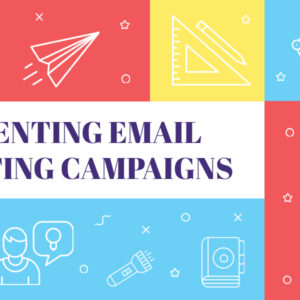There are many ways to start a business, and the traditional business plan is not the only option. In fact, some schools of thought argue that it is even detrimental to innovation. What you need is a plan for your idea, not a template for something someone else has created. With this in mind, here are six alternatives to the traditional business plan that you can consider.
The traditional business plan
The traditional business plan is a detailed document that outlines a company’s objectives, strategies, and resources. It’s often used as the foundation for securing funding from investors and other lenders. The problem? When these objectives or strategies do not work out as planned in the business plan, it may be difficult to change them without the original document. As a result, the usefulness of the business plan has declined in recent years.
Alternative one: prototype
Many startups now design a rough prototype of their product or service to test the idea before investing much time and money. The prototype may not be perfect, but it can be used to validate an idea and get feedback from potential customers.
Alternative two: white-paper
A white paper is a detailed report that focuses on a specific subject, typically for the purpose of educating readers about the topic. In the business world, white papers are used as a lead generation tool. The goal of a white paper is to educate potential customers about an issue in order to get them to take some action, like purchasing your product or service or enrolling in your course. A well-written white paper can be used to generate leads, and it’s also an effective way of getting people excited about your brand or product before you launch – which is why they’re so popular among startups.
So instead of writing up a traditional plan that outlines all the goals and objectives you want to reach in the next year (or five years), write a detailed document that educates your target market on a specific subject matter while at the same time promotes your company’s unique value proposition.
Alternative three: pitch deck
Pitch decks have replaced business plans for many startups. They are concise, easy to understand and contain all the information a VC or investor would need to make an investment decision.
Recently, there has been a trend of using digital pitch decks on websites like Slideshare and Made. These tools allow you to upload your company’s presentation in one location and share it with potential investors in one click. Furthermore, they offer many features, such as embedding videos, sharing slides on social media, adding notes and annotations, having public or private viewings of the deck and much more.
Alternative four; lean methodology
Lean methodology is a technique used by many startups to develop products. It is based on the idea of minimizing waste and maximizing profit. Lean methodologies can be applied to any type of project, but they are especially useful for developing new products or services. The goal of lean methodology is to find a product that people need and then sell that product as fast as possible.
Alternative five. Minimum Viable Product
One alternative to traditional business planning is the Minimum Viable Product (MVP). This technique is often used in Silicon Valley and was popularized by Steve Blank. The project is created with a bare-bones version of what you want, then it’s pushed out to your potential customers who give feedback about what you should do next.
The MVP technique involves doing everything in the most basic way possible and then reviewing customer reactions to see if there are any missing features that need to be added. It doesn’t cost much money and it allows for quick feedback on what people want from your product or service. When you’re finished with this, you’ll have a more complete idea of what problems need to be solved and how people would like them solved.
Alternative six. Lean Startup Methodology
The Lean Startup methodology was created by Eric Ries, an entrepreneur and author, who found that startups were failing because they were not addressing the market need. The Lean Startup methodology is a four-step process:
1. Build a minimum viable product (MVP)
2. Validate the idea through customer feedback
3. Adjust accordingly to get to your goal
4. Repeat steps 1-3 until you’ve achieved your goal or are satisfied with the progress made
This is an excellent alternative for bootstrapping businesses because it allows them to quickly address any problems with the product before moving forward. It also helps them avoid developing products that have no potential for success due to bad market research or unmet needs.
Conclusion
You can use these six alternatives to restructure your business plan if necessary or formalise your business ideas. These are excellent options for businesses of any size or stage of development – from start-ups to established companies.







